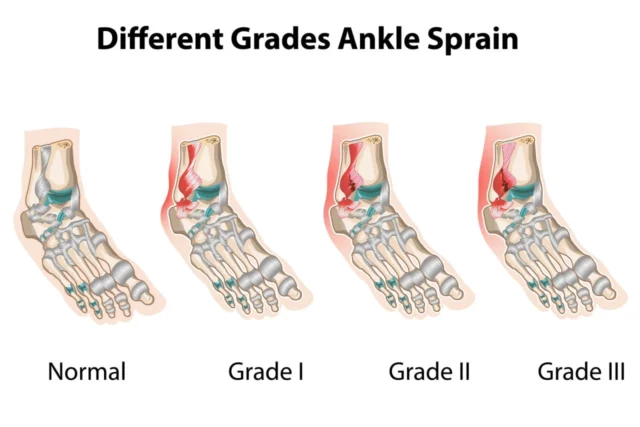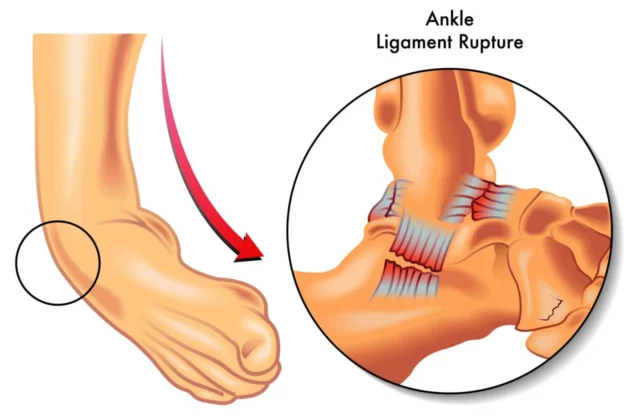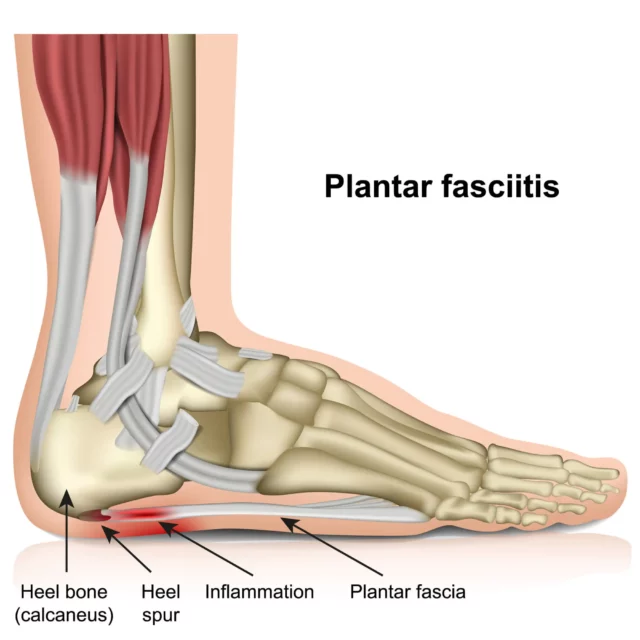The Anatomy Of A Ligament In A Foot
Ligaments are robust bands of fibers that connect bones, forming essential “ropes” in the body. They stabilize joints by holding bones in place during movement, preventing dislocations and injuries.
The foot contains over 30 ligaments that stabilize its various bones and joints, supporting the arch and absorbing shock with each step. Most foot ligaments span the arch (from toes to heel) and connect the tarsal and metatarsal bones across the foot’s width.
Here, we’ll explore the roles of the foot’s four main ligaments in maintaining foot health.
Plantar Fascia Ligament
The plantar fascia is a thick band of fibrous tissue running along the bottom of the foot, connecting the base of the toes to the heel bone. This ligament provides essential structure to the sole and acts as a shock absorber during activities like running, jumping, and walking.
When you move your foot, the plantar fascia stretches, absorbing and storing energy. This energy is then released when you push off the ground. These mechanics make the plantar fascia crucial for supporting explosive strength, propulsion, balance, and shock absorption.
Plantar Calcaneonavicular Ligament (Spring Ligament)
The plantar calcaneonavicular, also known as the spring ligament, consists of three ligaments connecting the midfoot bone (navicular) to the heel bone (calcaneus).
This ligament maintains the integrity of the foot’s arch, particularly its underside. Additionally, the spring ligament helps other structures counteract body weight and absorb shock during weight-bearing activities. This action prevents excessive flattening and collapse of the arch while walking or running.
Calcaneocuboid Ligament
The calcaneocuboid ligament is a cord-like structure connecting the heel bone (calcaneus) to the cuboid bone. Located on the external side of the foot, the cuboid bone serves as a main attachment for several muscles involved in foot movement.
By connecting the heel to the midfoot, the calcaneocuboid ligament helps create the foot’s arch, aids in weight-bearing and walking, modulates foot movement, prevents excessive motions, and distributes forces across the foot to ensure proper alignment between the hindfoot and forefoot.
Lisfranc Ligament
The Lisfranc ligament is composed of three distinct ligaments:
- The plantar ligament
- The dorsal ligament
- The interosseous ligament
These ligaments run obliquely across the foot, connecting the bones of the midfoot, specifically the metatarsal bones to the tarsal bones. Although the Lisfranc joint complex has a limited range of motion, it plays a vital role in transferring forces from the back of the foot to the front, enabling movements such as walking.
Other Associated Symptoms Aside From Pain
If any of the upper ligaments are affected by injury, inflammation, irritation, or damage, you will likely experience pain, one of the most prevalent symptoms of foot ligament disorders. In addition to pain and discomfort, you may also notice various signs that can assist in identifying the underlying cause of your condition.
Below, we’ll explore the symptoms that require careful observation:
- Swelling: Swelling often accompanies injuries such as sprains, strains, and tears, as well as conditions with high inflammation levels. This occurs due to increased blood flow and fluid accumulation as part of the body’s inflammatory response.
- Bruising: Bruising typically happens when a ligament in the foot tears or completely detaches from the bone. Trauma to the area damages nearby blood vessels, resulting in internal bleeding, discoloration, and bruising.
- Limited range of motion: The major ligaments in the foot are crucial for supporting joint movement. Damage to these ligaments reduces their ability to support normal joint motion, leading to stiffness and restricted mobility.
- Instability: Feeling like your foot can’t provide proper support or balance may indicate a ligament injury or disorder. Damaged ligaments can fail to stabilize foot joints, keep bones aligned during movement, and distribute forces effectively.
- Stiffness: Whether caused by an inflammatory condition like tendonitis or a traumatic injury, stiffness in the ankle or foot is common. Inflammation prompts swelling and fluid buildup around the injury, while damaged ligaments struggle to flex and extend normally, decreasing flexibility and mobility.
- Pain with movement: Foot injuries and inflammatory conditions often worsen with activity or vigorous movements, leading to increased pain. Some conditions, like plantar fasciitis, may cause severe pain during the first steps after rest periods.
Additional symptoms may be linked to specific conditions. For instance, changes in foot mechanics might result in abnormal bony growths (bone spurs), while chronic ligament conditions could lead to foot arch collapse and permanent tissue degeneration.
Conditions Related To Painful Foot Ligaments
Foot ligament pain, whether temporary or chronic, should not be overlooked, especially if it persists despite changes in footwear or reduced standing time. Chronic pain suggests underlying issues that require attention.
Over time, conditions such as inflammation and fractures can alter foot mechanics, affecting how weight is distributed during movement. Untreated, these changes can lead to imbalances and damage in parts of the foot normally unaffected by movement.
Serious degenerative conditions like arthritis, diabetes, and gout can also cause foot ligament pain. Neglecting treatment for these conditions may result in permanent damage to the foot’s essential structures that support mobility and general well-being.
Here, we will discuss some of the common causes of foot ligament pain. If you’re experiencing persistent foot discomfort, seeking an accurate diagnosis promptly is crucial.
Sprained Ligament
A foot ligament sprain is a common injury, often occurring in conjunction with ankle sprains when the foot twists or the ankle rolls. During a sprain, ligaments are damaged due to sudden twists, impacts, or falls that cause the fibers to stretch beyond their normal limits or in unnatural directions.
Sprains are classified based on the severity of ligament damage:
- Grade 1: Involves microscopic tears in the ligament due to stretching.
- Grade 2: Indicates a partial tear of the ligament.
- Grade 3: Represents a complete tear or rupture of the ligament.
Tendonitis
Plantar Fasciitis
Plantar fasciitis, also known as Plantar Heel Pain (PHP), is a prevalent cause of foot discomfort, accounting for over 600,000 healthcare visits annually in the United States. This condition arises from abnormal and sustained inflammation of the fascia—a ligamentous band that stretches from the heel to the toes along the bottom of the foot.
Among foot ligament injuries, PHP is highly prevalent and has various risk factors:
- Overuse
- Excessive stress
- Being overweight or obese
- Aging
- Engaging in high-impact activities
- Inadequate footwear
- Mechanical problems
Plantar fasciitis can become a chronic condition that, if untreated, may significantly reduce quality of life and potentially lead to disability.
Lisfranc (Midfoot) Injury
The Lisfranc joint, situated in the middle of the foot between the metatarsal and tarsal bones, serves as a crucial attachment point for midfoot ligaments and muscles. Injuries to this joint, such as fractures or dislocations, can result in excessive stretching and tearing of surrounding ligaments.
While minor Lisfranc injuries can often heal with immobilization or splinting, more severe damage involving the joint and adjacent ligaments may necessitate surgical intervention.
Fracture Of Fifth Metatarsal
Pain on the outside of the foot may indicate a fracture of the fifth metatarsal, a long bone that spans from the midfoot to the little toe. This type of injury can occur due to various causes:
- A sudden twist of the ankle
- Direct impact to the foot
- Hairline fractures
- Avulsion fractures, where a stretched ligament pulls away a fragment of bone
Individuals involved in high-impact activities or those experiencing repetitive foot stress are particularly susceptible to fifth metatarsal fractures. Symptoms typically include pain, swelling, and difficulty bearing weight on the affected foot.
Treatment varies depending on the severity of the injury. Displaced bones or multiple fractures may necessitate surgical intervention. Conversely, minor fractures can often heal with rest and immobilization, aiding in a faster recovery process.
Ligament Degeneration
Diagnostic Approaches To Foot Ligament Conditions
Diagnosing foot ligament pain can be challenging due to the variety of conditions that cause similar symptoms. To pinpoint the exact source of your pain, your doctor may employ several diagnostic tests and tools.
Here are some common tests used in diagnosing foot pain:
- Medical history: Your doctor will review your medical history to identify potential risk factors for conditions associated with foot pain, such as arthritis or diabetes.
- Physical examination: During a physical exam, your healthcare provider will assess your symptoms and examine your foot for signs of swelling, tenderness, limited range of motion, and any mechanical abnormalities.
- Imaging tests: To get a detailed look at the internal structures of your foot, your doctor may order imaging tests like X-rays, MRI scans, CT scans, or ultrasound. These tests use various techniques (e.g., sound waves or magnets) to produce images of bones, ligaments, tendons, and muscles. This helps identify issues such as bone spurs, tumors, or fractures that may be causing your pain.
- Stress tests: These tests involve manipulating your foot and applying pressure to specific areas to assess the stability of structures like ligaments and tendons.
- Diagnostic injections: If the source of the pain remains unclear, your doctor might use diagnostic injections of local anesthetic to pinpoint the “pain generator,” or the exact area causing the discomfort.
Conventional Treatment Options
To treat your foot ligament pain, start by obtaining an accurate diagnosis. If you have experienced a sprain or are battling chronic arthritis, several treatment options can help alleviate pain during flare-ups, including the following:
- RICE method: The RICE method stands for rest, ice, compression, and elevation. This approach helps decrease inflammation and swelling while easing the pressure on the foot. Utilizing the RICE method can relieve flare-ups and prevent fluid buildup that occurs immediately after an injury.
- Medications: Pain medications, such as nonsteroidal anti-inflammatory drugs (NSAIDs), can help by temporarily reducing inflammation, blocking pain signals, and providing relief from foot ligament conditions. They can be effective in managing pain and should be used as advised by a healthcare professional.
- Physical therapy: Physical therapy involves exercises, movements, and manipulations to improve the foot’s mobility, strength, and function. Over time, it can address musculoskeletal issues that might be aggravating your foot condition.
- Surgical interventions: In severe cases, foot ligament pain can be caused by multiple fractures or a ruptured ligament. When this occurs, surgical procedures may be necessary to repair torn ligaments and reconstruct damaged components of the foot. Surgery should be considered an option based on the recommendation of a healthcare professional.
How NextPain Care Helps Chronic Foot Ligament Pain
For those suffering from chronic or acute foot ligament pain, even the simplest actions – such as walking or climbing stairs – can be accompanied by excruciating pain. If you are affected by this condition, you know that over time, foot pain can impact your ability to live independently, work, practice sports, or participate in social activities.
At NextPain Care, we go beyond simply managing pain symptoms. Our three-level care system offers a comprehensive and personalized approach to pain management.
- Level 1: We start with conservative treatments like physical therapy and supplements.
- Level 2: If more support is needed, we advance to medications such as NSAIDs and minimally invasive injections.
- Level 3: For cases requiring further intervention, we employ advanced procedures, including surgical options.
Conditions We Treat At NextPain Care
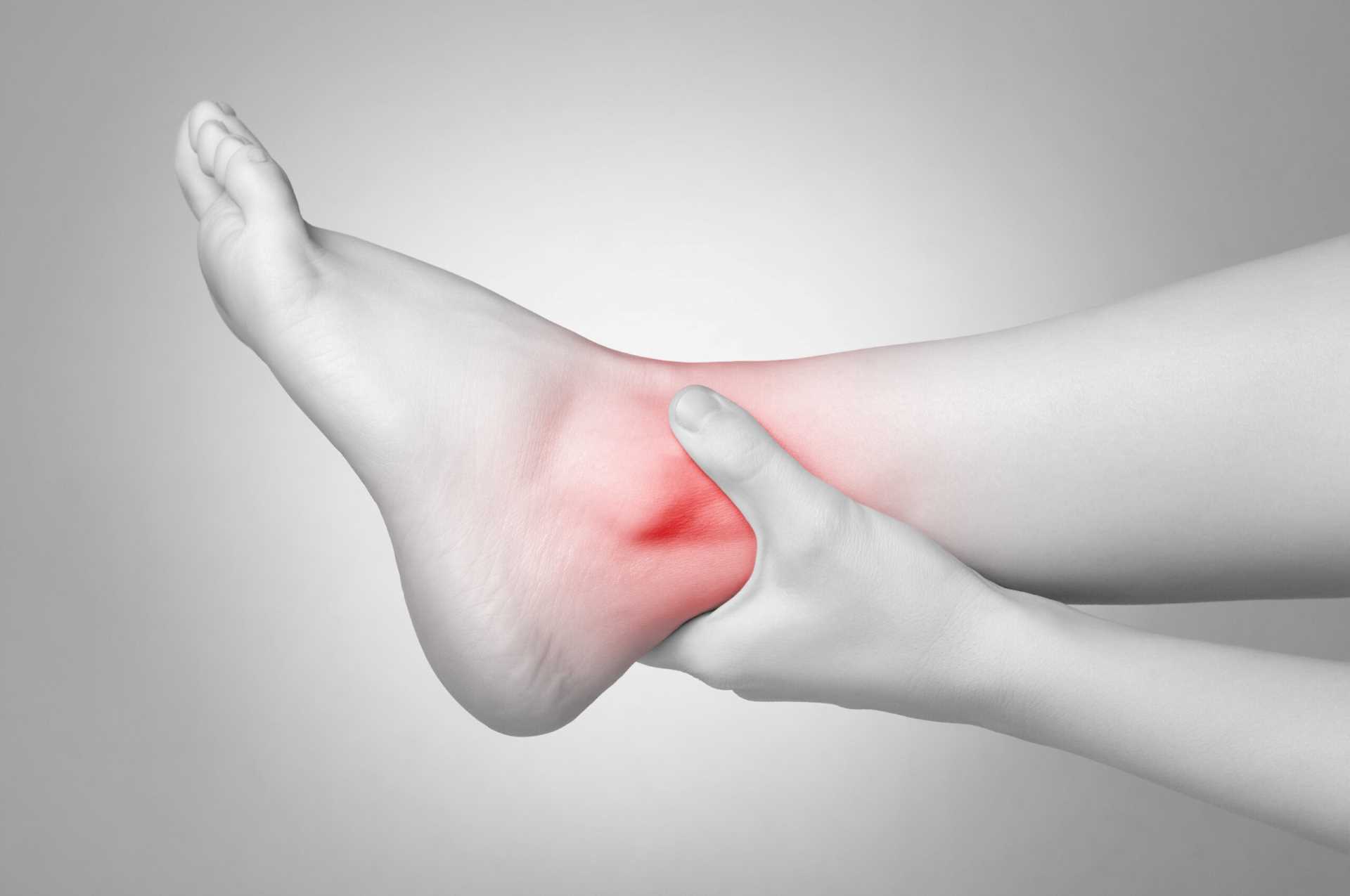
Ankle Sprain Pain Treatment
Ankle sprains often cause significant pain and can sometimes lead to long-term disability. Fortunately, with proper treatment, symptoms can be effectively managed. At NextPain Care, we deliver a comprehensive approach to pain...
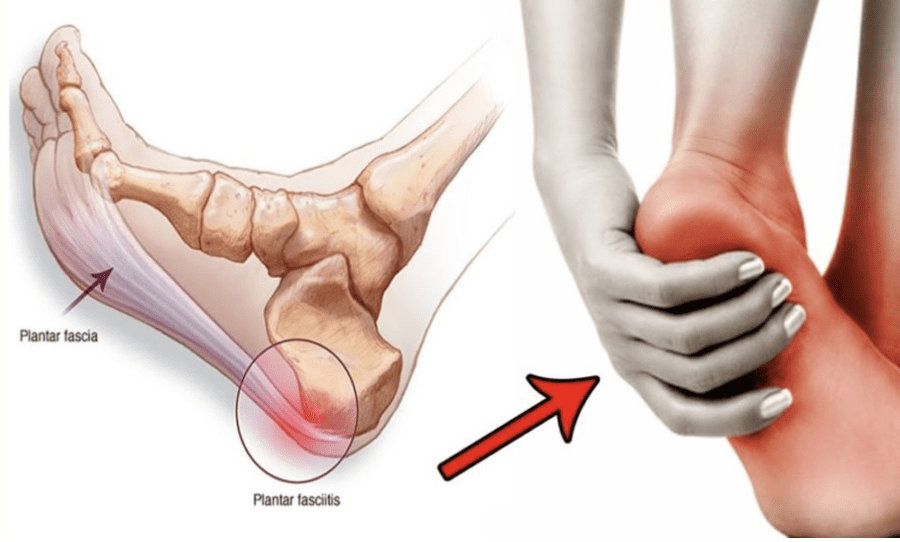
Plantar Fasciitis Pain Treatment
NextPain Care provides pain management for plantar fasciitis, focusing on improving mobility and offering lasting relief from chronic heel pain through personalized...
Discover Comprehensive Foot Pain Management with NextPain Care
At NextPain Care, our goal is to look beyond simply managing foot ligament pain. While easing pain is certainly important, we aim to address the lifestyle choices, health factors, and habits that may put your foot at risk of recurring injuries and pain.
Through the three-level system at NextPain Care, we aim to help you improve your foot health using a combination of physical and behavioral therapies, and advanced intervention, offering a comprehensive solution for managing pain.
Untreated foot ligament pain may impact your mobility and overall well-being.


